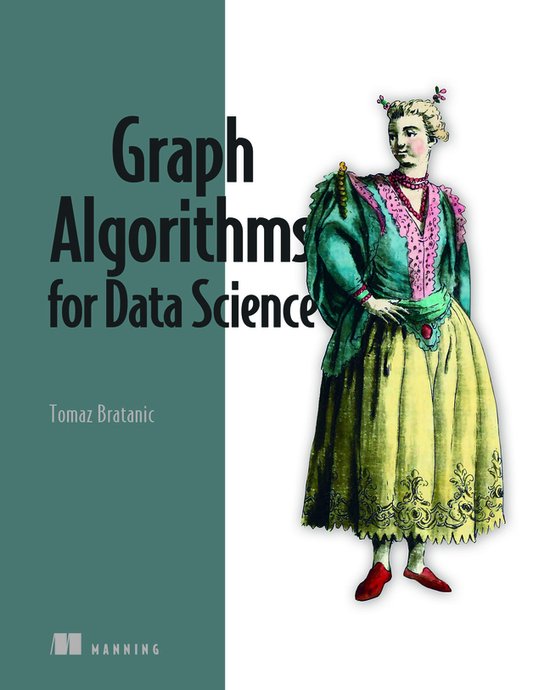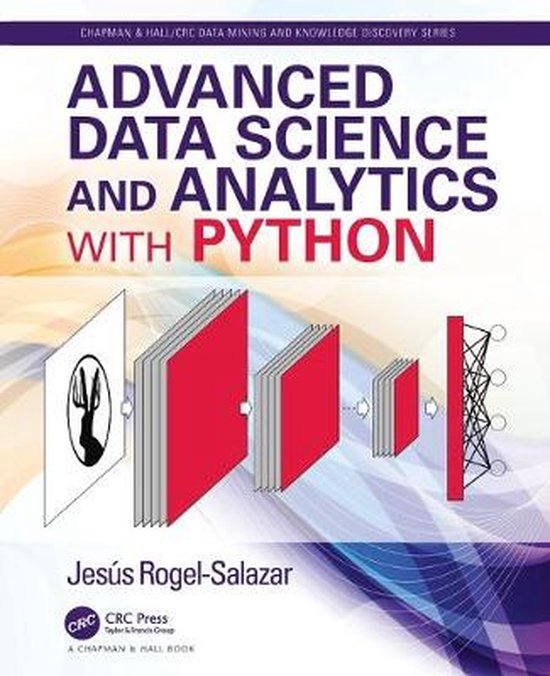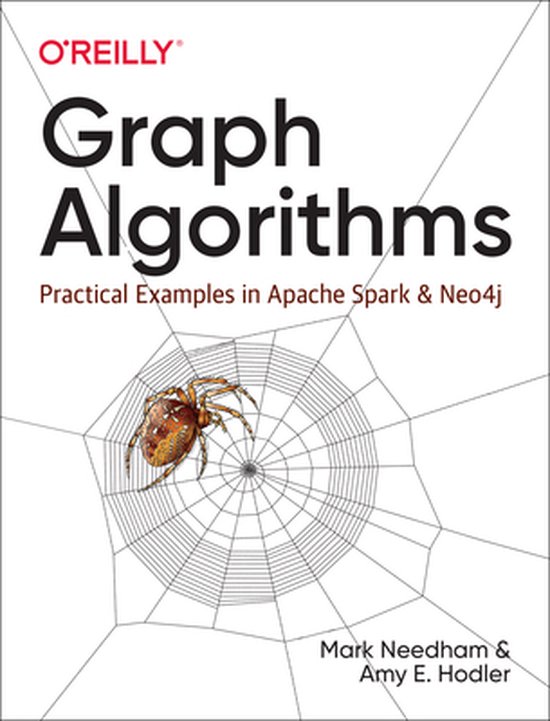
Graph Algorithms for Data Science
Graphs are the natural way to understand connected data. This book explores the most important algorithms and techniques for graphs in data science, with practical examples and concrete advice on implementation and deployment.
In Graph Algorithms for Data Science you will learn:
Graph Algorithms for Data Science is a hands-on guide to working with graph-based data in applications like machine learning, fraud detection, and business data analysis. It's filled with fascinating and fun projects, demonstrating the ins-and-outs of graphs. You'll gain practical skills by analyzing Twitter, building graphs with NLP techniques, and much more. You don't need any graph experience to start benefiting from this insightful guide. These powerful graph algorithms are explained in clear, jargon-free text and illustrations that makes them easy to apply to your own projects. about the technology Graphs reveal the relationships in your data. Tracking these interlinking connections reveals new insights and influences and lets you analyze each data point as part of a larger whole. This interconnected data is perfect for machine learning, as well as analyzing social networks, communities, and even product recommendations. about the book Graph Algorithms for Data Science teaches you how to construct graphs from both structured and unstructured data. You'll learn how the flexible Cypher query language can be used to easily manipulate graph structures, and extract amazing insights. The book explores common and useful graph algorithms like PageRank and community detection/clustering algorithms. Each new algorithm you learn is instantly put into action to complete a hands-on data project, including modeling a social network! Finally, you'll learn how to utilize graphs to upgrade your machine learning, including utilizing node embedding models and graph neural networks.
Graphs are the natural way to understand connected data. This book explores the most important algorithms and techniques for graphs in data science, with practical examples and concrete advice on implementation and deployment.
In Graph Algorithms for Data Science you will learn:
Graph Algorithms for Data Science is a hands-on guide to working with graph-based data in applications like machine learning, fraud detection, and business data analysis. It's filled with fascinating and fun projects, demonstrating the ins-and-outs of graphs. You'll gain practical skills by analyzing Twitter, building graphs with NLP techniques, and much more. You don't need any graph experience to start benefiting from this insightful guide. These powerful graph algorithms are explained in clear, jargon-free text and illustrations that makes them easy to apply to your own projects. about the technology Graphs reveal the relationships in your data. Tracking these interlinking connections reveals new insights and influences and lets you analyze each data point as part of a larger whole. This interconnected data is perfect for machine learning, as well as analyzing social networks, communities, and even product recommendations. about the book Graph Algorithms for Data Science teaches you how to construct graphs from both structured and unstructured data. You'll learn how the flexible Cypher query language can be used to easily manipulate graph structures, and extract amazing insights. The book explores common and useful graph algorithms like PageRank and community detection/clustering algorithms. Each new algorithm you learn is instantly put into action to complete a hands-on data project, including modeling a social network! Finally, you'll learn how to utilize graphs to upgrade your machine learning, including utilizing node embedding models and graph neural networks.
In Graph Algorithms for Data Science you will learn:
- Labeled-property graph modeling
- Constructing a graph from structured data such as CSV or SQL
- NLP techniques to construct a graph from unstructured data
- Cypher query language syntax to manipulate data and extract insights
- Social network analysis algorithms like PageRank and community detection
- How to translate graph structure to a ML model input with node embedding models
- Using graph features in node classification and link prediction workflows
Graph Algorithms for Data Science is a hands-on guide to working with graph-based data in applications like machine learning, fraud detection, and business data analysis. It's filled with fascinating and fun projects, demonstrating the ins-and-outs of graphs. You'll gain practical skills by analyzing Twitter, building graphs with NLP techniques, and much more. You don't need any graph experience to start benefiting from this insightful guide. These powerful graph algorithms are explained in clear, jargon-free text and illustrations that makes them easy to apply to your own projects. about the technology Graphs reveal the relationships in your data. Tracking these interlinking connections reveals new insights and influences and lets you analyze each data point as part of a larger whole. This interconnected data is perfect for machine learning, as well as analyzing social networks, communities, and even product recommendations. about the book Graph Algorithms for Data Science teaches you how to construct graphs from both structured and unstructured data. You'll learn how the flexible Cypher query language can be used to easily manipulate graph structures, and extract amazing insights. The book explores common and useful graph algorithms like PageRank and community detection/clustering algorithms. Each new algorithm you learn is instantly put into action to complete a hands-on data project, including modeling a social network! Finally, you'll learn how to utilize graphs to upgrade your machine learning, including utilizing node embedding models and graph neural networks.
Graphs are the natural way to understand connected data. This book explores the most important algorithms and techniques for graphs in data science, with practical examples and concrete advice on implementation and deployment.
In Graph Algorithms for Data Science you will learn:
- Labeled-property graph modeling
- Constructing a graph from structured data such as CSV or SQL
- NLP techniques to construct a graph from unstructured data
- Cypher query language syntax to manipulate data and extract insights
- Social network analysis algorithms like PageRank and community detection
- How to translate graph structure to a ML model input with node embedding models
- Using graph features in node classification and link prediction workflows
Graph Algorithms for Data Science is a hands-on guide to working with graph-based data in applications like machine learning, fraud detection, and business data analysis. It's filled with fascinating and fun projects, demonstrating the ins-and-outs of graphs. You'll gain practical skills by analyzing Twitter, building graphs with NLP techniques, and much more. You don't need any graph experience to start benefiting from this insightful guide. These powerful graph algorithms are explained in clear, jargon-free text and illustrations that makes them easy to apply to your own projects. about the technology Graphs reveal the relationships in your data. Tracking these interlinking connections reveals new insights and influences and lets you analyze each data point as part of a larger whole. This interconnected data is perfect for machine learning, as well as analyzing social networks, communities, and even product recommendations. about the book Graph Algorithms for Data Science teaches you how to construct graphs from both structured and unstructured data. You'll learn how the flexible Cypher query language can be used to easily manipulate graph structures, and extract amazing insights. The book explores common and useful graph algorithms like PageRank and community detection/clustering algorithms. Each new algorithm you learn is instantly put into action to complete a hands-on data project, including modeling a social network! Finally, you'll learn how to utilize graphs to upgrade your machine learning, including utilizing node embedding models and graph neural networks.
| Auteur | | Tomaz Bratanic |
| Taal | | Engels |
| Type | | Paperback |
| Categorie | | Computers & Informatica |





